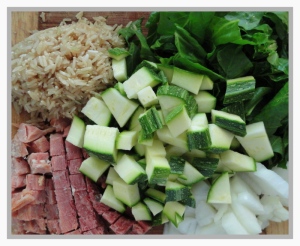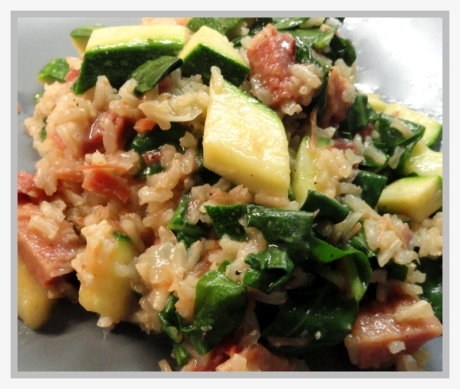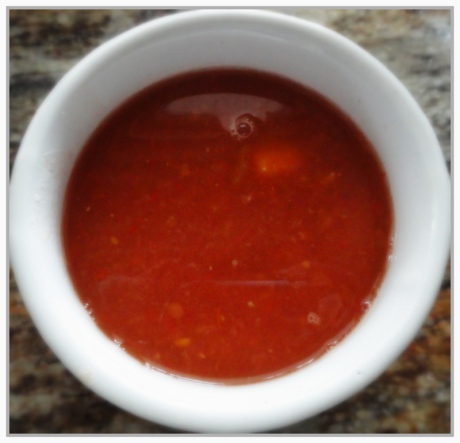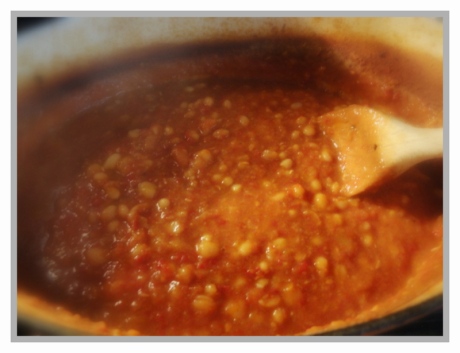Working on the basis that whole grains fill you up for longer, tonight’s supper was based around brown jasmine rice, the remains of a ham I’d cooked earlier in the week and some fresh vegetables. Usually I’d use a short-grain rice for risotto, but the jasmine rice was the only brown rice I had on hand. It absorbs liquid more slowly than short-grain rice, but the benefit of that is that you don’t have to keep stirring it all the time. It does take a lot longer to cook, though…
Recipe for Ham and vegetable risotto (serves 2)
 10g butter
10g butter
1 onion, diced
100g/½ cup brown jasmine rice, NOT rinsed
1 cup ham stock
1 zucchini/courgette, diced or cut into batons
35g fresh spinach, washed, stalks removed, shredded
100g cooked ham, diced
Total calories per serving: 350
Method: melt the butter in a pan and stir in the onion, cooking until translucent. Add in the rice, cook for a minute, then gradually stir in the stock, adding more as it gets absorbed by the rice. Add water if the rice gets too dry before it cooks (this takes at least 45 minutes with this sort of brown rice, so you have to be patient (not easy if you’re feeling hungry!)). Test the rice to make sure it’s soft enough to eat (crunchy rice is not enjoyable), then stir in the zucchini, cook for three or four minutes and add the spinach and ham. Cook just long enough to wilt the spinach and warm the ham through, then stir in some freshly ground black pepper and serve.
My husband’s comment: “It’s hard to believe you’re calorie-counting with food like this”.






